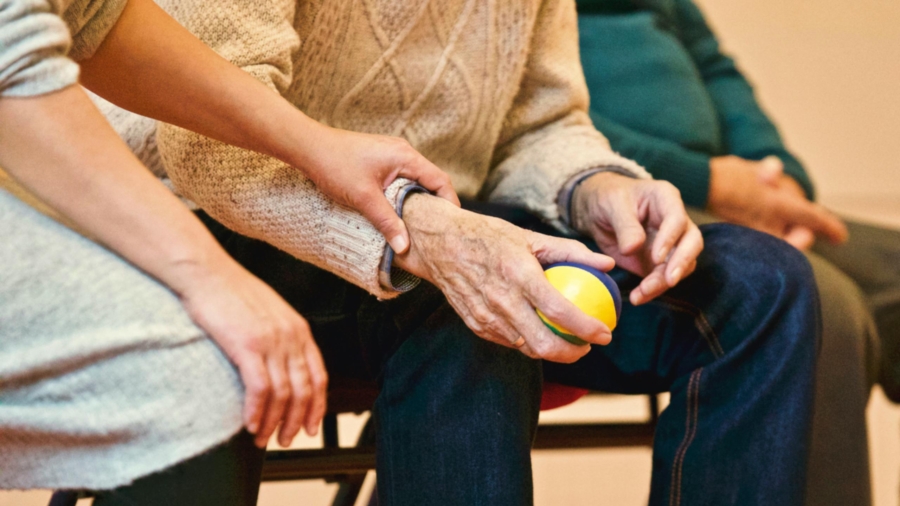Long-term care is a pressing concern for many clients of estate planning attorneys, elder law practitioners, and financial advisors. With the rising costs of care and the aging Baby Boomer population, the importance of Medicaid as a financial safety net cannot be overstated. This comprehensive guide will equip estate planning professionals with the knowledge and tools to help their clients understand Medicaid eligibility for long-term care.
What Is Long-Term Care?
Long-term care encompasses a range of services designed to assist individuals who can no longer manage the essential activities of daily living. These activities include bathing, dressing, eating, and managing medication. Long-term care is often provided in specialized facilities like nursing homes or assisted living communities, staffed to meet residents’ needs around the clock.
For estate planning clients, long-term care is a significant consideration. According to Genworth Financial’s 2023 Cost of Care Survey, the national average cost for a private room in a nursing home exceeds $8,500 per month. With 10,000 Baby Boomers turning 65 every day until 2030, and seven out of ten of them requiring long-term care at some point, planning ahead is crucial to protecting financial security and family assets.
The Connection Between Long-Term Care and Estate Planning
The financial burden of long-term care can quickly deplete a client’s life savings, leaving little to no resources for their spouse or heirs. For clients whose wealth is tied up in retirement accounts, navigating long-term care costs becomes even more complex.
Qualified retirement assets are treated differently depending on the state, necessitating tailored strategies to manage these funds effectively. Without a well-crafted estate plan, clients risk losing their assets to care costs or facing heavy tax consequences when accessing retirement funds.
Medicaid: A Much-Needed Resource for Long-Term Care
Medicaid is a federal program managed at the state level. It provides essential financial support for nursing home care to those who meet its strict eligibility requirements. Unlike private-pay options or long-term care insurance—both of which are costly and often insufficient—Medicaid offers a viable solution for clients unable to afford the staggering expense of long-term care.
Without Medicaid, clients may exhaust their savings to cover care costs, leaving their spouse or family financially vulnerable. Medicaid ensures that those in need can access care without jeopardizing their family’s financial stability.
Medicaid Eligibility: The Basics
Medicaid eligibility hinges on two main factors: physical need and financial criteria.
- Physical Need
Applicants must demonstrate a need for skilled nursing care, usually through a physician’s assessment. - Financial Need
Medicaid eligibility is determined by strict income and asset limits, which vary by state. Generally, an applicant must have minimal assets and limited income to qualify.
Managing Income and Assets for Medicaid Eligibility
Clients with excess income or assets face challenges qualifying for Medicaid. However, attorneys can employ various strategies to help:
- Spending Down Assets: Clients can use their resources on allowable expenses, such as home improvements or paying off debt, to meet Medicaid’s asset limits.
- Medicaid Asset Protection Trusts: Tools like the iPug® Trust allow clients to transfer assets into an irrevocable trust while retaining some control. This strategy protects assets from being counted toward Medicaid eligibility and shields them from creditors or misuse.
- Gifting Strategies: While outright gifts to family members may seem like a solution, they can trigger penalties during Medicaid’s five-year lookback period and subject the transferred assets to the creditors and predators of the individuals gifted to. Trusts like the iPug® offer a safer, more controlled alternative and permit the financial resources to family members to pay for care or other needs of the client not provided by Medicaid.
- Medicaid-Compliant Annuities: These financial products convert excess assets into income streams that meet Medicaid requirements.
The Medicaid Application Process
Applying for Medicaid is a complex and time-sensitive process. Attorneys should guide clients through these essential steps:
- Assess Eligibility: Evaluate the client’s income, assets, and physical need for care.
- Prepare Documentation: Gather all necessary paperwork, including proof of income, asset statements, and identification.
- Apply Strategically: Time the application to coincide with asset transfers or other planning measures.
- Monitor the Process: State agencies can take weeks or months to process applications. Follow up regularly to ensure timely approval.
- Avoid Mistakes: Common pitfalls, such as incomplete documentation or missed deadlines, can lead to delays or denials.
Common Pitfalls in Medicaid Planning
Even minor missteps can derail a Medicaid application. Some common errors include:
- Failing to provide complete documentation.
- Misreporting income or assets due to misunderstanding eligibility rules.
- Missing deadlines for submitting additional information or appealing a denial.
- Overlooking the need for annual Medicaid recertification.
Attorneys play a vital role in helping clients avoid these pitfalls and ensure a smooth application process.
Use LWP’s STEPS™ Software for Medicaid Planning
Lawyers with Purpose (LWP) offers Strategic Trust and Estate Planning Software (STEPS™) to simplify the Medicaid planning process. STEPS™ provides patented, state-specific software that calculates clients eligibility and amount of assets that can be protected (even after admission to a nursing home), ensuring attorneys can craft effective plans tailored to their clients’ circumstances. Key features include:
- Medicaid Qualification Worksheet
This tool calculates when a client will qualify for Medicaid, determines penalty periods, and identifies the assets that can be protected. - Asset Protection Analysis Letter
Written in plain language, this letter explains the value of Medicaid planning to clients and advisors, highlighting the financial benefits of early action. - Funding Roadmap
A visual representation of the recommended plan, helping the attorney and client understand the steps required to protect their assets. - Ancillary Documents
STEPS™ generates essential documents, such as promissory notes, caregiver agreements, and Qualified Income Trusts (QITs), streamlining the implementation of Medicaid plans.
Proactive Medicaid Planning Strategies
Early planning is the cornerstone of successful Medicaid strategies. By starting before the need for care arises, clients can preserve more assets and avoid rushed decisions. The iPug® Trust, for instance, allows clients to protect their wealth while retaining control and access in emergencies. This trust also prevents the risks associated with outright gifts, such as mismanagement or creditor claims.
Attorneys should educate clients about these options through workshops, one-on-one consultations, and easy-to-understand materials like the Asset Protection Analysis Letter.
The Pillars of iPug®
At its core, iPug® operates on three foundational principles:
- Flexibility: Traditional trusts often lack adaptability, but iPug’s platform allows clients to adjust their plans as life circumstances evolve. Whether it’s updating beneficiaries, incorporating new assets, or adjusting to changing tax laws, iPug ensures your plan remains effective and relevant.
- Accessibility: With an intuitive interface and guided workflows, iPug simplifies the complexities of asset protection. Attorneys and financial advisors can easily navigate the platform to create customized solutions for their clients, while clients gain a clearer understanding of their options.
- Legal and Regulatory Compliance: Asset protection strategies must align with the law to be effective. iPug® integrates compliance tools, helping professionals meet state and federal regulations, avoid pitfalls, and provide airtight solutions.
Incorporating the iPug® Trust and LWP’s STEPS™ software into your practice not only enhances client service but also creates substantial revenue opportunities. Medicaid planning can generate significant fees—often between $5,000 and $20,000 per case—while positioning your firm as a comprehensive, full-service provider of estate planning. Additionally, integrating these tools with your CRM streamlines workflows, improves client management, and supports scalable growth, making Medicaid planning a valuable revenue stream and a key differentiator for your firm.
Staying Current on Medicaid Regulations
Medicaid eligibility thresholds and rules are constantly changing state-wise but the federal law hasn’t changed for quite some time. Attorneys must stay informed to provide accurate advice. Tools like LWP’s STEPS™ software ensure attorneys have access to up-to-date information, allowing them to adapt client plans as regulations evolve.
Educating Clients on Long-Term Care Planning
Effective communication is key to helping clients understand the importance of Medicaid planning. By presenting personalized scenarios and tangible benefits, attorneys can motivate clients to take action. Workshops, newsletters, and one-on-one consultations are excellent ways to educate clients and their families.
Real-World Success Stories Using iPug® for Medicaid
LWP members have successfully used the iPug® Trust to help clients preserve their assets while qualifying for Medicaid. For example, one attorney worked with a couple who faced losing their life savings to nursing home costs. By implementing an iPug® Trust and a Medicaid-compliant annuity, they saved over $300,000 and secured Medicaid coverage within months.
These success stories underscore the importance of proactive planning and the value of tools like LWP’s STEPS™ software.
Medicaid planning is a much-needed component of estate planning for clients facing long-term care needs. By understanding Medicaid eligibility criteria, employing effective asset protection strategies, and leveraging tools like LWP’s STEPS™ software, attorneys can provide clients with peace of mind and financial security. Proactive planning not only preserves assets but also ensures clients receive the care they need without burdening their families.
Take Your Practice to the Next Level with LWP Membership
Struggling to hit your monthly revenue targets? Searching for a new revenue stream that sets your firm apart? If you’re not offering Medicaid planning as part of your services, you’re missing a crucial opportunity to better serve your clients and grow your practice.
Adding long-term care planning and Medicaid qualification to your estate planning practice positions you as a full-service firm. You’ll guide clients through every stage of their journey—from the initial estate plan to address illness or disability, Medicaid applications, and eventually probate or trust administration.
LWP membership is designed to support firms like yours. With tiers to meet your needs, the “Legal Foundations” membership offers access to our powerful Medicaid qualification tools, along with extensive education and document drafting solutions. For firms looking for even more robust resources, our advanced tiers include marketing support, business coaching, and additional tools to scale your practice.
Ready to explore the possibilities? Schedule a discovery call with our team today and learn how LWP can help you achieve your law firm business goals. Don’t just serve your clients—become indispensable to them.
To learn more about how Lawyers With Purpose can help your law firm’s growth plans and profitability, contact us at info@lawyerswithpurpose.com or call (877) 299-0326.












